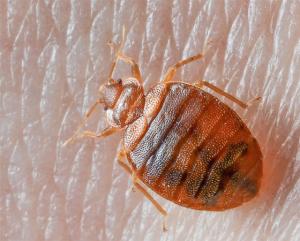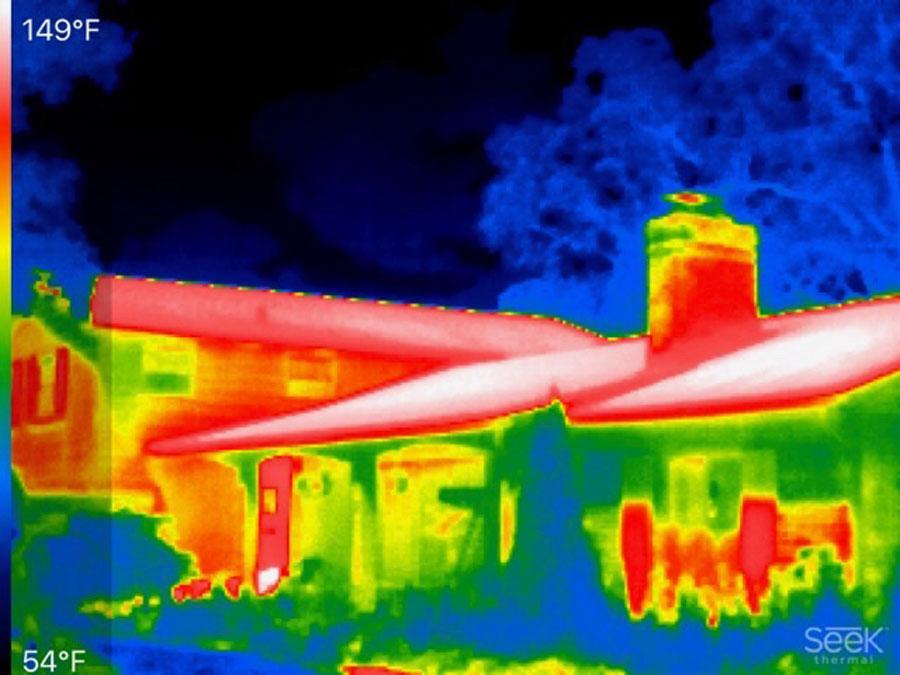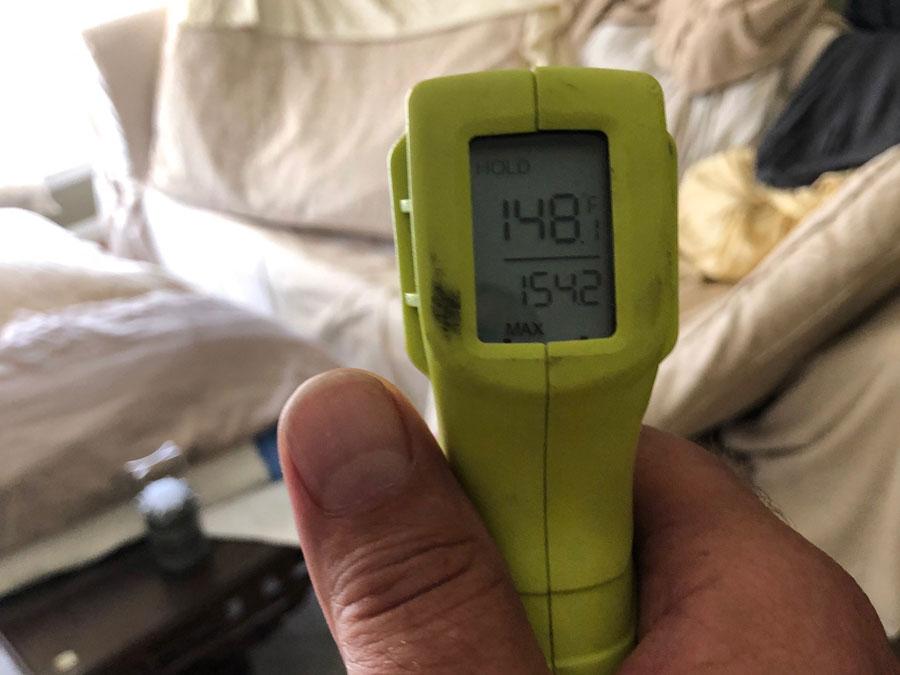So Bret Stephens* visited our house last month...

*OK, technically he didn't, but...well, read on.
About five weeks ago, around the 3rd week of July, regular readers may have noticed that my output both here as well as on Twitter dropped off considerably for a week or so (much to the relief of some, I'm sure).
I made a vague reference or two to "dealing with a personal crisis" while also reassuring folks that it wasn't anything tragic (no one died, got terribly sick, divorced, etc), but didn't get into any details.
For reasons which will soon become clear, my wife was not thrilled about the idea of my sharing our little saga with the world...at least not until we were 100% certain it had been resolved.
More specifically, while she agreed that there was a legitimate healthcare angle to justify posting something about it on my site, she wanted me to wait at least five weeks before going public...namely, yesterday.
As it happens, yesterday also just happened to be the exact date that the Twitterverse exploded with two major stories related to...bed bugs.
President Trump on Tuesday blamed “Radical Left Democrats” for spreading a “false and nasty rumor” about a bedbug infestation at his golf resort in Doral, Fla., after he said he would like to hold next year’s Group of Seven summit at the property.
...In 2016, Doral was sued by a former guest, Eric Linder, who said he had been bitten multiple times by bed bugs while staying in the luxe Jack Nicklaus Villa at Trump’s property. His complaint alleged that he awoke to discover “welts, lumps and marks over much of his face, neck, arms and torso.”
Linder alleged that the villa had “a history of severe bed bug infestation.”
The Trump Organization denied the allegation, without going into detail. It settled the case in 2017, shortly after Trump’s inauguration.
Neal Hirschfeld, a Florida attorney who represented Linder in the bedbug lawsuit, said he could not comment Tuesday because the settlement included a confidentiality clause.
Reports about the settlement resurfaced on social media Monday after Trump held a joint news conference with French President Emmanuel Macron at the end of the G-7 summit in Biarritz, France. At the news conference, Trump sought to make a case for convening at the Trump National Doral Miami next year when the United States hosts the G-7 summit.
By Monday night, the hashtag “#TrumpBedBugs” was trending on Twitter.
Then, the other shoe dropped (not on a bed bug, sadly):
This afternoon, I tweeted a brief joke about a well-known NYT op-Ed columnist.
It got 9 likes and 0 retweets. I did not @ him. He does not follow me.
He just emailed me, cc’ing my university provost. He is deeply offended that I called him a metaphorical bedbug.— davekarpf (@davekarpf) August 27, 2019
Alright fine... here is the email:
— davekarpf (@davekarpf) August 27, 2019
As of this writing, less than 24 hours later, Dr. Karpf's original tweet has over 73,000 Likes and 11,000 Retweets.
This morning, the entire American Mediasphere was engulfed in a #BretBugs feast:
But Tuesday morning, Stephens appeared on MSNBC to address the incident further.
He called the Karpf’s bedbugs tweet “dehumanizing and totally unacceptable” and said he invited Karpf to his home to see if the professor would call him a bedbug to his face — because, Stephens said, “a lot of things people say on social media aren’t the things they’re really prepared to say in one-on-one interactions.”
He also explained why he had copied the provost on the email, saying that he did not want to get Karpf in professional trouble, but that “managers should be aware of the way in which their people, their professors or journalists, interact with the rest of the world.”
“Using dehumanizing rhetoric like bedbugs or analogizing people to insects is always wrong,” Stephens said. “We can do better. We should be the people on social media that we are in real life.”
Stephens also deactivated his Twitter account on Tuesday, writing that the platform “is a sewer. It brings out the worst in humanity. I sincerely apologize for any part I’ve played in making it worse, and to anyone I’ve ever hurt.”
The message disappeared when Stephens deactivated his account, but he confirmed to The Post that he had left Twitter.
Setting aside the asinine doubling-down of his original response which was already insanely over the top, there's also the matter of him flat-out lying about "not wanting Karpf to get into trouble" by cc'ing Karpf's boss over the silly, innocuous jibe.
But I digress. Regardless of the surrounding media silliness, let's get back to my own story.
So, in mid-July, I flew out to Philadelphia to participate in a healthcare forum at the Netroots Nation conference. While there, I stayed at an apartment via Air BnB...the first time I've ever done so. It seemed like a nice enough place, and all seemed well...until I got home that Sunday.
On Tuesday morning, my wife woke up with big, nasty welts all over her back and shoulders. Over the next couple of days new ones would appear even as the earlier ones faded away. On a more serious note, she also started having fairly serious problems breathing (she uses an inhaler).
NOTE: I originally thought it was Monday morning, but I just asked my wife and she said it was that Tuesday.
After a couple of days trying different ointments to no avail (hydrocortisone, bacitracin, etc), she visited the doctor, who immediately identified the welts as being unmistakably caused by...bed bugs.
We keep our house pretty clean and have never had a problem with bed bugs before, so it was pretty clear what had happened: The Air BnB I stayed at most likely had a bed bug problem, and I had brought home a stowaway in my luggage.
As I said, this isn't a minor annoyance...for someone like my wife who's highly allergic, the welts aren't just unsightly and itchy, it was potentially deadly due to the severe breathing problems they caused her.
I'm not sure why my wife was hit but not myself...but according to the CDC:
A bed bug bite affects each person differently. Bite responses can range from an absence of any physical signs of the bite, to a small bite mark, to a serious allergic reaction. Bed bugs are not considered to be dangerous; however, an allergic reaction to several bites may need medical attention.
Take a wild guess what end of the spectrum each of us falls under.
We started doing research on exterminators, but neither of us was thrilled at the prospect of having someone spraying literal poison all over our house...not that that really matters, because it turns out that bed bugs are extremely difficult to get rid of, especially on a long-term basis:
Some people still say the only reason we have bedbugs now is because we banned DDT [after concerns about its threat to wildlife]. But that’s just not true. We would’ve had this problem regardless of the ban. The bigger problem is that bedbugs were becoming resistant to DDT, and that was starting to happen way before the ban occurred.
DDT and other pesticides work on the nervous system of insects — often by screwing with their ion channels and leaving them open so that it fries the nervous system. These new resistant bedbugs were essentially able to close that channel again, so that didn’t happen.
...They're cryptic insects, and they hide during the day, which makes them hard to detect with the human eye.
But the resistance is definitely a problem. Bedbugs have what’s called a knockdown resistance — it’s the same genetic mutation that gives them resistance to DDT. Separately, there are enzymes called P450s that break down the insecticides more quickly, so that they’re not as toxic to insects. There’s also research that some insects may be growing thicker exoskeletons, making it tougher for insecticides to penetrate.
There are other factors, too. Some people aren’t allergic to them, so they might catch the problem only far later, when it’s become a really bad infestation. Also, bedbugs can spread very easily in cities — because to get rid of them you have to work with other people sharing living space or sharing walls. That can be incredibly difficult.
...Bedbugs are especially difficult, because they live in our bedroom, and that’s one of the places we want to be especially careful when it comes to applying insecticides. So that’s part of the issue there.
...Keep in mind that there’s a caveat for anything I could possibly say here. I do think heat treatments are very helpful — bedbugs don’t seem to be developing a resistance to those. Basically you heat a room to a certain temperature, and it kills the bugs and the eggs, without chemicals involved.
The caveats, though, are that this is expensive; it can cost thousands of dollars.
Sure enough, that's exactly what we ended up having to do: We hired a company which specializes in heat treatments specifically...and yes, it was expensive. Very expensive...and that doesn't even include having to replace not one but two mattresses (both ours as well as our son's...bed bugs don't stay in one room).
The thing is, when I say "heat treatment", I don't just mean cranking up the thermostat...you have to raise the temperature in the entire house all the way up to at least 140 degrees (preferably closer to 150 degrees)...and you have to leave it at that temperature for several hours.
That also means before they do so, you have to remove anything which could be damaged, melt, fall, be damaged or explode from being heated to that temperature--candles; compressed air (pop cans, etc); perishable food which can't be stored in the fridge or freezer; any sensitive electronics (flatscreen TVs, stereos, computer equipment, etc); any soft plastics; CD/DVD cases...the list goes on and on.
We spent two whole days hauling all this stuff out to our garage...and that raises another problem: A lot of the stuff you take out of the house could also be infested, which means you have to clean it off by spraying it down with rubbing alcohol first...and of course you can't do that with everything...which means besides throwing out two (previously) perfectly good mattresses, we also had to throw out or recycle a bunch of other stuff as well.
We also had to treat our german shepherd and cats with de-lousing treatments before having my in-laws pick them up to watch them for a few days.
So. Friday morning at 7am, they show up hauling a trailer with an industrial-size heater...and by "industrial size", I mean the type of equipment used to de-ice jetliners at airports:
My wife, son and I had to shower and dress (making sure to only dress in clothes which had just spent a half-hour in the dryer), spray ourselves with alcohol first, and then leave the house. Once we leave the house, we can't go back in for any reason for 24 hours.
They roll out the heating hose, which is about a foot in diameter. Before they start on the house, they bake the interiors of both of our cars. This only takes about 20 minutes or so.
Next, they seal up the entire house except for cracking open one window upstairs to help draw the heat upwards. Then they seal up the front door with heavy tarps...and crank up the generator to blast piping hot air inside.
They had set up remote sensors throughout the house which send signals to an app on their phone (of course) to let them know how hot every area of the house is. Thye also use infrared cameras, which as an aside do a good job of letting us know what parts of the house need more insulation. It takes a good 5-6 hours to heat up the entire house from top to bottom.
While all this is going on, we don't have much to do other than go eat, hang out at my in-laws and go to the library. Before they leave the house and lock it up, they send a guy in to make sure the temperature is hot enough manually. He can only stay inside for a minute at most, and even then he's covered in sweat when he comes out.
After that, the house simply bakes overnight. We have to stay at a hotel (add that to the cost!)...making sure to check for bed bugs there first, of course.
The next morning, we drive back home at around 8am. The temperature is still well over 100 degrees upstairs, so I open up every window in the house...and then we leave again to get breakfast.
By the time we get back a couple of hours later, the temperature has dropped enough for us to move back in...but before we can start bringing everything back in from the garage, there's one more problem: It can take up to three weeks for bed bug eggs to hatch, so the only way to be absolutely certain that the heat treatment wiped out all of them is to...simply wait.
And so, we waited. And waited. And waited. Every morning my wife had to check for new welts, and thankfully no new ones appeared (our son is either immune as I appear to be, or was never bitten in the first place). Finally, after giving it an extra week just to be sure, we were satisfied that yes, it worked.
...just in time for the Trump/Bret Stephens bed bug stories to crawl out of the woodwork.
(Oh, and yes, I did notify the AirBnB hosts and I've also filed the address with the Bed Bug Registry).








